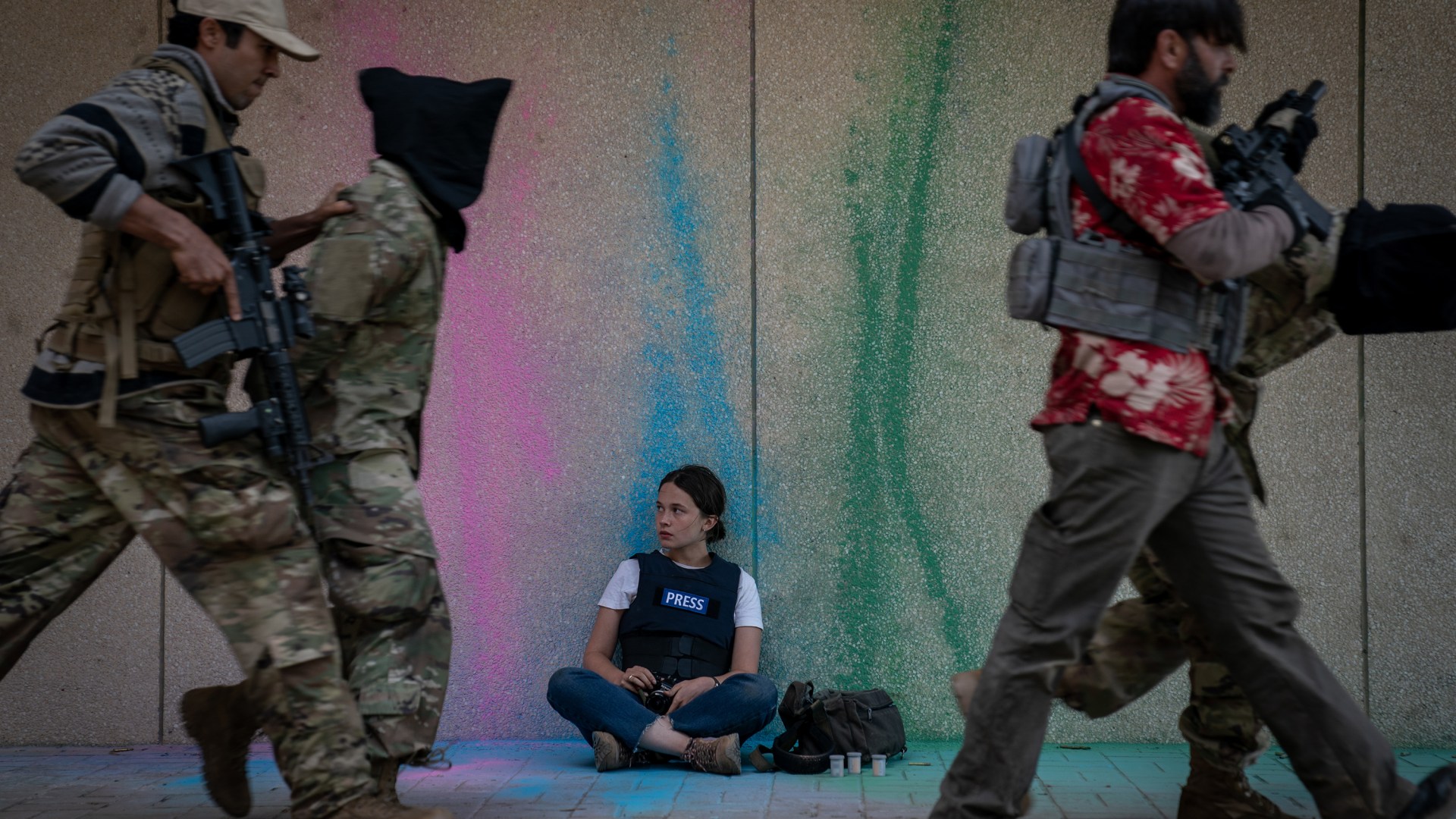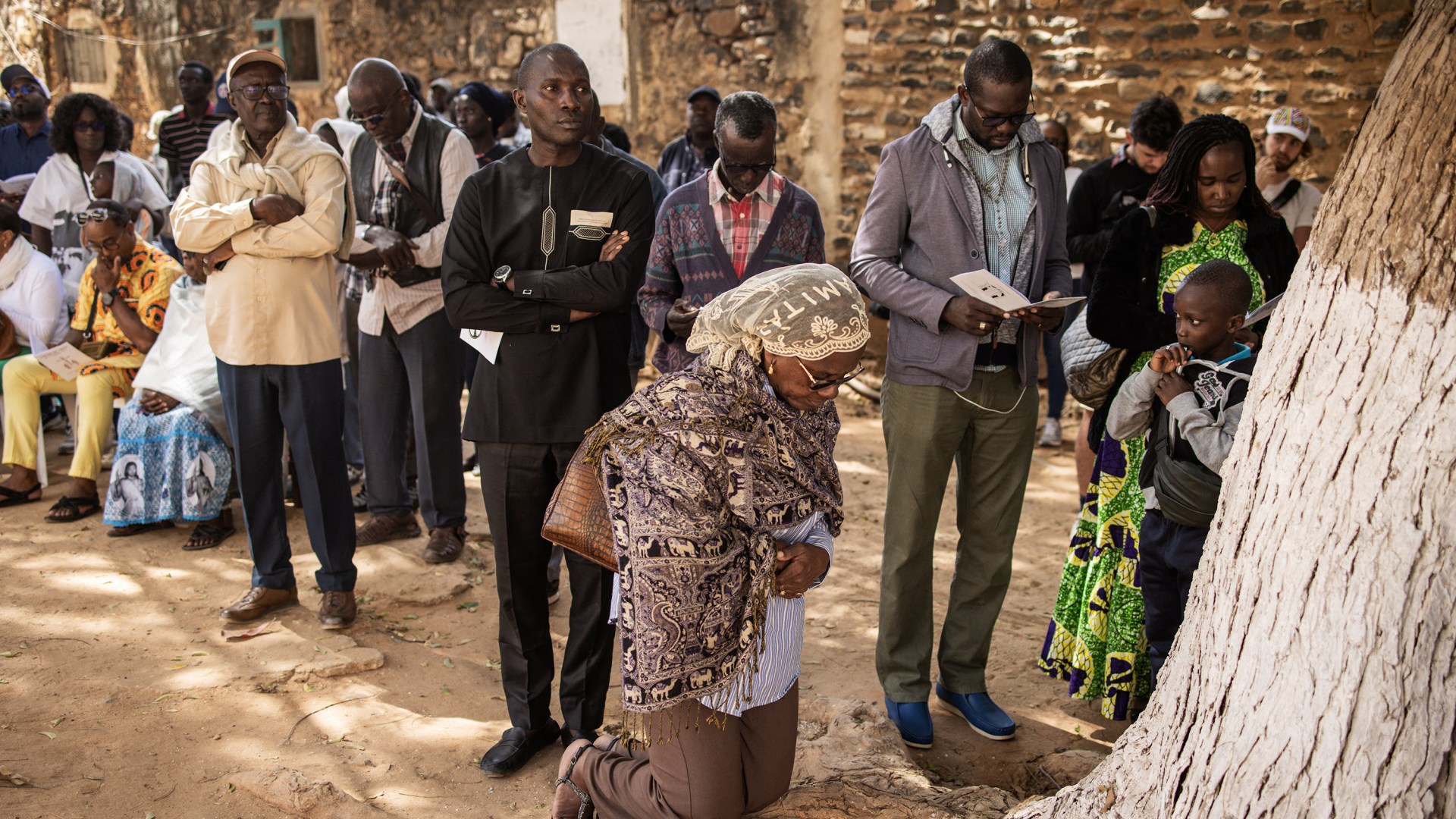Growing up, our car radio was always tuned to 90.7, American Family Radio. We lived about 15 minutes from the nearest town, so we spent a lot of time driving. If we were lucky, Mr. Whittaker’s warm, grandfatherly voice invited us to join him for Adventures in Odyssey. But more often, we’d listen to alarmed (and alarming) talks from Tim Wildmon, president of the American Family Association, or Focus on the Family’s James Dobson, each warning my parents of all the ways the world was coming for us.
Their message was convincing, and not only for my parents. I’d plug my ears when Ms. Barbie, my warm-hearted school bus driver who wore denim cutoffs and had brightly lacquered nails, sometimes tuned her portable radio to 96.9 KISS FM, “Amarillo’s #1 Hit Music Station,” and started singing along to secular music on the 45-minute ride to school. I felt palpable relief when I instead climbed aboard to the sound of Garth Brooks crooning about his friends in low places. After all, everyone in Texas knows God has a soft spot for country.
One of the strangest things about being raised in that embattled mindset was how my side seemed embarrassed of what we had to offer the wider world. We said we knew the truth about God and humanity, but I got the distinct impression that we were far from confident that the truth could hold its own out there.
My elders and the voices they heeded on the radio seemed to take a defensive posture, self-conscious about our intractable fuddy-duddy-ness and anxious that these commitments would cost us. It felt like they weren’t sure we could ever compete on a level field. We had God on our side, but they had MTV. Our only option was to circle the wagons and pray we could outlast the storm.
Seeing this attitude in the adults in my life wasn’t reassuring. Instead, it made me wonder: If we knew the truth, why were we so afraid? Now I see the youthful ignorance in that kind of binary question, but I earnestly wrestled with it in those days, and as I entered adulthood, I sought to become a Christian who didn’t meet the world with fear, defensiveness, and accusations.
Perhaps it’s this history that leaves me fascinated whenever I encounter people who aren’t Christians and yet independently arrive at truths Christians know—especially truths about how to order healthy, safe families for the flourishing and well-being of children. It helps me remember that even though Christians have at times advanced these principles poorly, sometimes doing more harm than good both inside and outside the church, the principles are true. We do have something to offer the world. And rather than circling up in fear or anger, we should make that offering in love, showing how a real and living God changes hearts, heals relationships, and restores lives.
I’ve most recently had such an encounter while reading Troubled: A Memoir of Foster Care, Family, and Social Class by Rob Henderson, released last month. Born to a drug-addicted mother and passed through ten different foster families before finally being adopted, Henderson chronicles a life of chaos. Reading about his movement from a childhood of upheaval to a distinguished military career, undergraduate education at Yale, and a PhD from Cambridge feels a bit like riding river rapids on a flimsy inner tube.
Rather than simply recounting his tragic and shocking experiences, though, Henderson moves from the particular to the universal with an expertise few memoirists have. With his own life as an example, he invites readers—especially those who dismiss traditional family systems as outdated, unnecessary, or worse—to turn a critical eye on their own assumptions. Upward mobility (along with trappings like elite education) shouldn’t be a goal in and of itself, he argues. But it may well be a byproduct of the pursuit of more important things: “family, stability, and emotional security for children.”
Though he’s not making this argument in the same way Dobson or former US vice president Dan Quayle did in the 1990s, Henderson arrives at a very similar conclusion: that a stable, nurturing, two-parent family confers considerable advantage to children. He also argues that the progressive elite’s public dismissal of traditional family values doesn’t reflect the reality of their personal lives, and he has the data to back it up. By 2005, Henderson writes, “85 percent of affluent families were still intact, but for working-class families the figure had plummeted to 30 percent.” Similarly, just 10 percent of students at Cornell University were raised by divorced parents, compared with a national divorce rate of 40 percent.
Henderson calls the claim that marriage doesn’t matter a “luxury belief,” a term he coined and defines in Troubled as “ideas and opinions that confer status on the upper class at little cost, while often inflicting costs on the lower classes.” If you’re like me, once Henderson helps you see one luxury belief, you start to see them everywhere: “Defund the police” is a slogan that might earn you some street cred as a student at an Ivy League protest, but it’s not a policy many residents of fragile communities want. Arguing that monogamy is passé might get you on the New York Times bestseller list, but it’s not how you get a table full of generations of family on Thanksgiving Day.
Henderson doesn’t root his arguments in a religious framework, but it’s easy to see the connection to a Christian ethos. While making a secular case for the importance of healthy families, his story and research also illustrate another value that finds ample expression in our faith: the transformative and redemptive power of community.
For Henderson, much of that community came outside the context of family, although not through a church. And though he doesn’t follow that trail far, it seems obvious that our culture needs these other sources for social stability and support. This is where the local church can shine—if we choose to open our circle of wagons.
Churches can be a profound force for good in families both in ministry and in mission. While there are obviously broken families both within and outside the church, research shows regular churchgoers “marry more and divorce less” than their peers, and an “active faith appears to be connected in some way with more stable marriages.” And local churches are well positioned to care for kids living in the rubble of broken families and the fallout of others’ destructive choices. God still places the lonely in families (Ps. 68:6), after all, and sometimes that looks like showing up for Grandparents’ Day or the father-daughter dance for a child who sits in the pew in front of you.
Another new memoir, Between Two Trailers, by J. Dana Trent, gestures at that latter sense. Trent tells stories from a childhood with drug-dealing, mentally ill parents. The book reads like a fever dream—fantastical and outlandish, yet heartbreakingly vivid and real. Between Two Trailers never makes clear how Trent came out on the other side, but little moments of grounding offer at least some of the answer: summers with her paternal grandparents and extended family, and Wednesday night dinners and youth group at a church that became Trent’s safe haven. The church was, she reflects, “an environment where people were required by sacred law to be nice to me.”
My childhood was marked by chaos and instability too. But unlike the memoirists’ families, my parents remained consistently plugged into churches, and when I reflect on those years, I think of all the people in those faithful Christian communities who looked past the drama and difficulties that came with my family and welcomed us.
Pastor Mike, Ms. Katy, Rex, the Longs, the Browns—not to mention myriad aunts, uncles, grandparents, and teachers. The list of names, too long for me to complete, points to the grace of God who always kept my head above turbulent waters. His people—some of the very same people who were worried about all the ways the world was coming for us children—were my life raft.
These days, my own children have a decidedly more mundane life. There’s not a lot of drama or chaos, other than when I try to get them out of bed and into a pew on a sleepy Sunday morning. But when we get to church, I know they are seen and known and loved. They are enveloped in a community of caring, safe adults who fill in the gaps left by the inevitable fallibility and shortcomings my husband and I have as parents. Even in the absence of capital-T traumas, as researchers at Harvard have found, grounding our children in a faith community offers a “protective factor for a range of health and well-being outcomes in early adulthood.”
I believe it—and the rest of a growing body of independent evidence that faith and the shape of life it demands is tangibly good for children. And why wouldn’t it be if we’re following our creator? Why would we be surprised to find an indelible connection between God and the good life?
Henderson’s book, while at times troubling, offered me an unexpected gift. Reading it helped me look at my messy, confusing, evangelical childhood a bit more charitably. I had long ago rejected the shrill and scolding voices of conservative evangelicals shrieking about the decline of family values as unhelpful and obnoxious. As it turns out, they got a lot right, even if I still think their delivery got a lot wrong (and even contributed to the coarsening and hardening of our culture).
Stories like Henderson’s and Trent’s—and even my own—also remind me of how badly the world needs a healthy church. Amid all the talk of deconstruction and dechurching, abuse of authority and political polarization, these stories refocus my gaze from the church in the abstract to the church where I take my children every week. They remind me of ordinary, imperfect congregations of kindhearted Sunday school teachers and long-suffering children’s choir directors and patient youth volunteers.
When I pay attention to what’s right in front of me, I see the way so many of my brothers and sisters in Christ steadily pull the awkward, the outcast, the uncomfortable, the uncertain, and the troubled into the fold.
For all the church’s flawed messengers, the message is still there. It is still true. Despite all the fear and outrage, the local church is still offering ordinary faithfulness to salve the wounds of a troubled world. We still have good news to tell.
Carrie McKean is a West Texas–based writer whose work has appeared in The New York Times, The Atlantic, and Texas Monthly magazine. Find her at carriemckean.com.












































